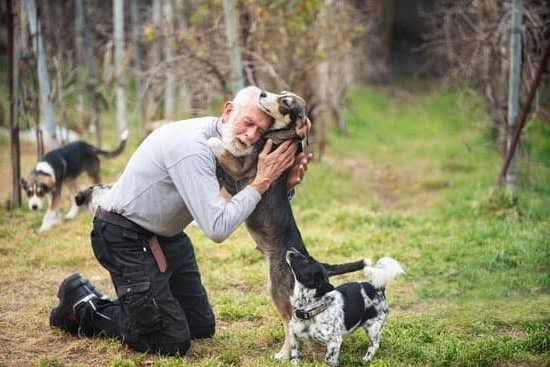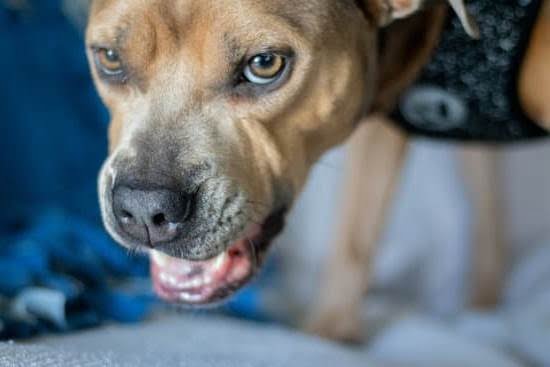Introduction
Training a dog to respond to their name can be done in a few simple steps. First, it is important to make sure that the environment is distraction-free, as this will make it easier for your pup to focus on you. When ready, call out their name and use a high-pitched voice or squeal if needed. Praise them unconditionally if they respond by coming to you or even looking at you. If not, you can stand or crouch down so that your pet has an easier time making eye contact with you. Keep repeating the same process until your pup associates his/her name with its behaviour.
The benefits of teaching a dog their name are endless. Once they have grasped the concept of responding to their own name, they become more attentive and responsive when called – no matter what kind of environment the call occurs in. This encourages positive communication between you and your pet which is beneficial for both parties involved! In addition, teaching a dog their name serves as an essential step in obedience training as further commands need to be directed specifically at them in order for them to follow them accurately and consistently. Finally, once properly trained, teaching your dog its nam provides added peace of mind knowing that if ever it gets lost or runs away it can be quickly tracked down with an appropriate call from its owner’s voice!
Supplies
Training a dog their name can be an enjoyable and rewarding experience. Before starting the process, however, you will need to gather some supplies. This includes treats, a collar with ID tags, and your patience!
Treats: Dog treats are one of the best tools for training your pup their name. Look for high-value items like meaty jerky or small pieces of cheese that will keep your dog’s attention. Make sure not to give them too much so they don’t get sick from over-treating!
Collar: A sturdy collar is important for identification tags attached to it that will have your dog’s name and contact information on it. If your pup ever gets lost, these tags make sure they can get back to you safely. You should also make sure the collar fits properly. Too tight may cause harm or make them too uncomfortable to want to wear it.
Patience: Dogs learn at different rates, but most of all they need positive reinforcement and lots of love while learning their name! Set aside extra time each day to practice with your pup and use positive encouragement when they eventually learn it. Offering lots of treats after they respond correctly is great reinforcement as well!
Introducing the Name
Introducing your dog to their name is an important step in establishing communication between yourself and your pup. Training them to recognize and respond to their name will help you effectively communicate commands and make suggestions about how they should behave.
Start by making sure the name you have chosen is short and easy for your dog to learn. You should also select a name that works well with its breed and appearance, if possible.
Once you have settled on a name, begin by saying the pup’s new name along with a positive phrase each time you greet them or give them food or treats. Doing this each time you interact with the dog is a great initial practice for further training.
You can also begin simply calling out the dog’s name each time they enter the room or when you arrive home, giving them positive attention as soon as they hear their name. It may take some time before they recognize that when they hear their name being called it is associated with something positive each time. Once they understand this concept, they are more likely to focus on their owner when its called out.
By consistently following this routine your pup will soon get used to its own name and be able to quickly identify when it has been said in a particular setting or context. Once the pet has imprinted the sound of its master calling its own named, it will be far easer for everyone involved in his future obedience training sessions!
Reward Systems
When training your pup their name, the most effective and long-lasting approach is through positive reinforcement. Positive reinforcement is a reward-based system that rewards your pup with treats, verbal praise, or physical affection to incentivize desirable behaviors. When training your dog their name, it is important to always use their name in conjunction with plenty of praise and reward them with treats for properly responding to their name when you call it out. Good timing is essential; the moment your pup responds to their name and looks at you, give them the treat, some verbal praise (such as “good job”), and/or some physical affection (such as petting them on the head). Eventually, you will be able to reduce and eliminate the treats in exchange for more verbal praise and physical love, but using treats when teaching new things such as names helps set a strong foundation that is more likely to result in successful long-term learning.
Building Repetition
One of the first and most important commands your dog should learn is their name. With repetition and consistent techniques, it’s possible to train your dog to respond every time you call their name. Here are a few easy steps and techniques to get started:
1. Choose a distinctive name for your dog that is short and easy to remember so they can easily recognize it.
2. Every time they respond correctly, reward them with positive reinforcement such as treats, verbal praise or physical affection.
3. Find ways to incorporate their name into everyday activities such as when you leave for work in the morning, when you return home at night or when switching tasks during playtime.
4. Make sure that family members who interact with your pet also use their name consistently so they will recognize when it’s being used by different people as well.
5. Break down learning commands into smaller sections before introducing the full command; like teaching your dog how to sit before teaching them how to “sit-stay” using their name in the cue word (e.g., “Barkley, Sit-Stay”). Start by addressing them with their name first and then introducing other words such as “stay.” Use hand signals whenever possible alongside verbal cues in order to create strong associations between a command and desired behaviors in your pup’s mind..
6. Create engaging opportunities where you practice calling out your dog’s name while playing fetch or tug-of-war using enticing objects or toys – this way, they have an incentive to pay attention! Additionally, providing treats every time they complete an action correctly helps reinforce good behavior and encourages further repetition of desirable responses in the future (e.g., each time “Barkley” brings back the toy after a game of fetch, give him a treat).
7 . Repeat these steps over several days until your pup can respond correctly even if there are distractions around – this proves that they understand what you’re asking from them and signifies mastery of the given command!
Identifying Progress
The first sign of progress when it comes to training your dog their name is that they will start to respond eagerly when it is called out. This response time should be recognized and rewarded with a treat, verbal praises or physical affection. As your puppy grows and matures, their attention span also increases, so pick up the pace of your training accordingly. Don’t forget to reward even small successes along the way; this will help solidify learning and build confidence in your pup.
Celebrating progress can be done in multiple ways. For example, you can physically congratulate your pup through gentle strokes or ear scratches, offer extra-special treats like freeze-dried liver snacks or give verbal encouragement such as telling them “Good job!” If you’re feeling extra generous you could invest in buying a toy that’s specifically for rewarding your training accomplishments. Remember – rewards only work if given consistently so seize every opportunity to celebrate success!
Troubleshooting
Problem 1: Not Responding When Called
Solution: Use a positive reinforcement reward system to reinforce your dog’s response when they hear their name. As soon as your pup makes eye contact or turns in the direction of their name, give them a treat or some verbal praise. This will demonstrate that responding to their name is beneficial and can also help reduce distractions from other things going on around them.
Problem 2: Easy Distractions
Solution: If your pup gets distracted easily, give them a command right after you call their name and then reward them for following both commands. For example, instead of just calling their name, call out “Spot come” followed by a treat each time they come over when they hear the combination of their name and command. This will help teach them that paying attention to both commands is what earns rewards.
Problem 3: Fearful Reaction to Name
Solution: Make sure you’re speaking calmly and confidently when saying their name as well as using a friendly tone when you call them over to you. Additionally, don’t make them do anything they don’t want to do when they come over–just let them know that responding positively means something good for them! You can also slowly increase the distance away from the person saying the pup’s name (i.e., start with having someone standing close, then move partway across the room).
Finish Line
Teaching your dog their name is an important exercise that brings multiple benefits to both the dog and the owner. For one, it helps to establish a bond of trust between the two as the dog learns that their name signals recognition and attention from their human companion. Over time, this can make your pet more attentive when you are talking to them and they may be more likely to respond promptly when called. In addition, teaching a dog its name will help you in everyday life with training commands and directions, as your pet will quickly learn the distinction between their own name and other words you may use during commands. The overall outcome of training your dog their name should be a loyal companion that acknowledges your presence through affectionate behavior whenever they hear their own name. This can be especially beneficial for those who want a long-term bond with their pets as it encourages a stronger connection between human and animal.

Welcome to the blog! I am a professional dog trainer and have been working with dogs for many years. In this blog, I will be discussing various topics related to dog training, including tips, tricks, and advice. I hope you find this information helpful and informative. Thanks for reading!





